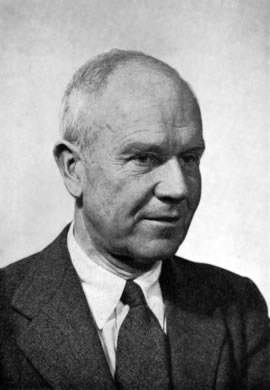It’s time to dig deeper into Crane Brinton’s theory about revolutions. The question I will be answering today is “Why has Crane Brinton’s theory of revolutions stood the test of time since it was written in the 1930’s?” Back then things were a lot different. There were no computers, internet or cell phones like today. The revolutions he studied to come up with his theory were a long time ago. What makes the theory useful today?
Brinton was a historian who wrote the book The Anatomy of Revolution in 1938. It examined four revolutions (English, American, French and Russian) in order to find the common pattern between them. His theory compared a revolution to a disease with a high fever over four stages. Stage 1 is incubation when there are some signs of concern and injustice. Stage 2 is the moderate stage where moderate leaders try to make improvements. Stage 3 is the crisis stage which is violent and radicals control the government. Stage 4 is the recovery stage where the radicals are repressed and there is a slow return to quieter times.
https://youtu.be/7GagpR79KkQ
Easy to Understand: Brinton’s theory continues to be relevant because he used a metaphor that is easy to understand by any generation. This makes it useful for teachers when teaching students about revolutions. Revolutions can be long and complicated but this makes it clearer.
Applicable to Other Revolutions: Students can apply the metaphor to analyze other revolutions (past and present), not just the four Brinton used to come up with his theory. There have been revolutions since the 1930’s that can be analyzed using his theory. Brinton also gave students insight on revolutions when he said simply “revolutions are born of hope”.
Explainable With Modern Technology: Even though Briton’s theory is older, it can be used with modern technology and culture to help explain a revolution to a young generation. For example, here is a video that I found by Jerome Lingo that applies Brinton’s theory to The Hunger Games:
https://www.youtube.com/watch?v=ztDaSnAB6QQ
Well-researched: The theory has lasted a long time because it was well-researched and carefully put together. Brinton was an expert in history and revolutions and he did a lot of work to back up his findings. He even went out and did lectures about his theory before he published it to get feedback and make his book even better. With feedback from audiences, he could check it was understandable.
Updated: Another reason it has lasted is because Brinton kept the book up to date and he kept revising it so it was re-published every so often. He added titles to the bibliography and included an important epilogue in the last edition. Brinton’s The Anatomy of Revolution became an evolving, updated book.
Not Just for Schools: Brinton’s theory has proven useful over the years because it has not only been used in schools but in other areas like government and news reporting. For example, reporters have talked about it when looking at the revolution in Egypt. In the 1960’s Crane Brinton gave the US government’s Senate Foreign Relations Committee a lesson in revolutions focusing on Vietnam. US President Jimmy Carter was advised about the Iranian Revolution based on the principles of Mr Brinton’s theory. Brinton’s theory is used to help understand current revolutions and try to forecast what will happen next with them.
Still A Lot of Interest in Major Revolutions: Brinton used four key revolutions that are still studied by students today and the general public are still very interested in them. For example, the French Revolution has had impacts that lasted hundreds of years. Every year thousands of people flock to the French Revolution historical sites in and around Paris. Here is a slide show I put together that shows how the French Revolution fits into Brinton’s theory and it uses photos taken on my vacation to France. This is another example of how Brinton’s theory can be combined with modern times.
https://www.youtube.com/watch?v=7GagpR79KkQ&feature=youtube_gdata
Summary: In summary, Brinton’s theory has stood the test of time because it was well researched, regularly updated and it stands up to scrutiny. It is easy for students to understand so they can learn about past and present revolutions. It is helpful in many areas like school, university, government and reporting. It is a theory that can be explained using modern techniques to update it for today’s generation. People today are still interested in learning about revolutions. Brinton’s theory is simple to use and understand and he put in a lot of work to pull it together and keep it useful.
Sources:
Keynote photos belong to S Laube
Slideplayer: Brinton photo source: http://slideplayer.com/slide/9030305/
For picture of White House http://www.publicdomainpictures.net/view-image.php?image=13611
Culture Travel Guide: http://www.culturaltravelguide.com/french-revolution-in-1789-historical-sites-paris-part-2
PBS: http://www.pbs.org/marieantoinette/life/
A and E History: http://www.history.com/topics/napoleon
The Five Stages of Egypt’s Revolution by C Holmes June 2012: http://foreignpolicy.com/2012/06/15/the-five-stages-of-egypts-revolution/
Brinton Teaches Senators Lesson About Revolution – The Harvard Crimson February 20, 1968 http://www.thecrimson.com/article/1968/2/20/brinton-teaches-senators-lesson-about-revolution/
Amazon Book Reviews: https://www.amazon.com/product-reviews/0394700449/ref=cm_cr_arp_d_viewpnt_lft?k=The+Anatomy+of+Revolution&showViewpoints=1&pageNumber=1&filterByStar=positive
Like Success Quotes: http://likesuccess.com/author/crane-brinton
Anatomy of a Classic: Crane Brinton’s The Anatomy of Revolution Matthew Beland Oct 2008 Paper https://books.google.ca/books?id=-jUvsJVUBpsC&pg=PA184&lpg=PA184&dq=anatomy+of+a+revolution+brinton+still+referred+to&source=bl&ots=aoWB5D_myk&sig=_2R7JcdWB88jMWf4mYWPqnfmiXI&hl=en&sa=X&redir_esc=y#v=onepage&q=anatomy%20of%20a%20revolution%20brinton%20still%20referred%20to&f=false


